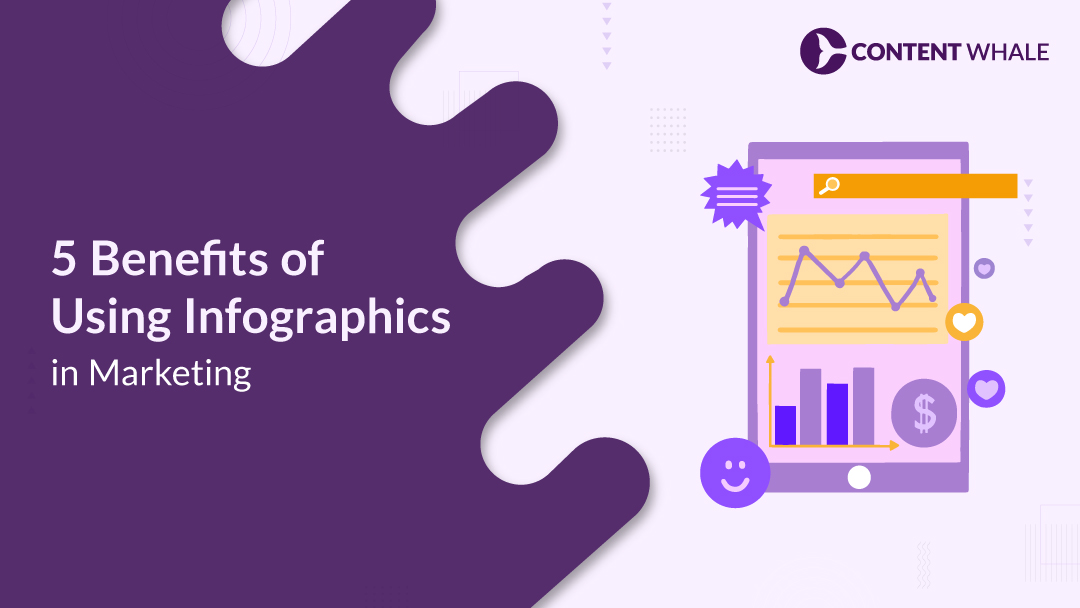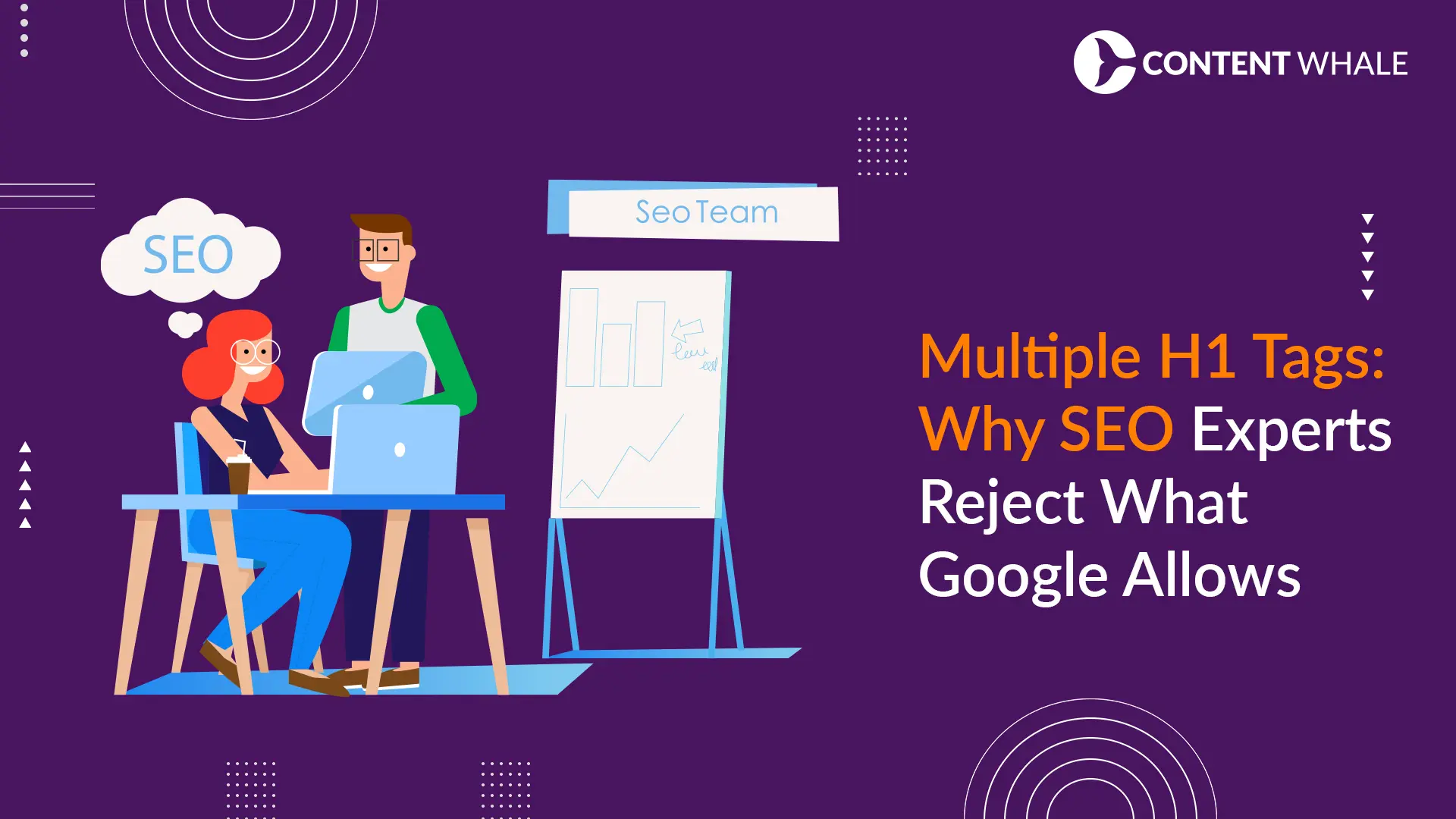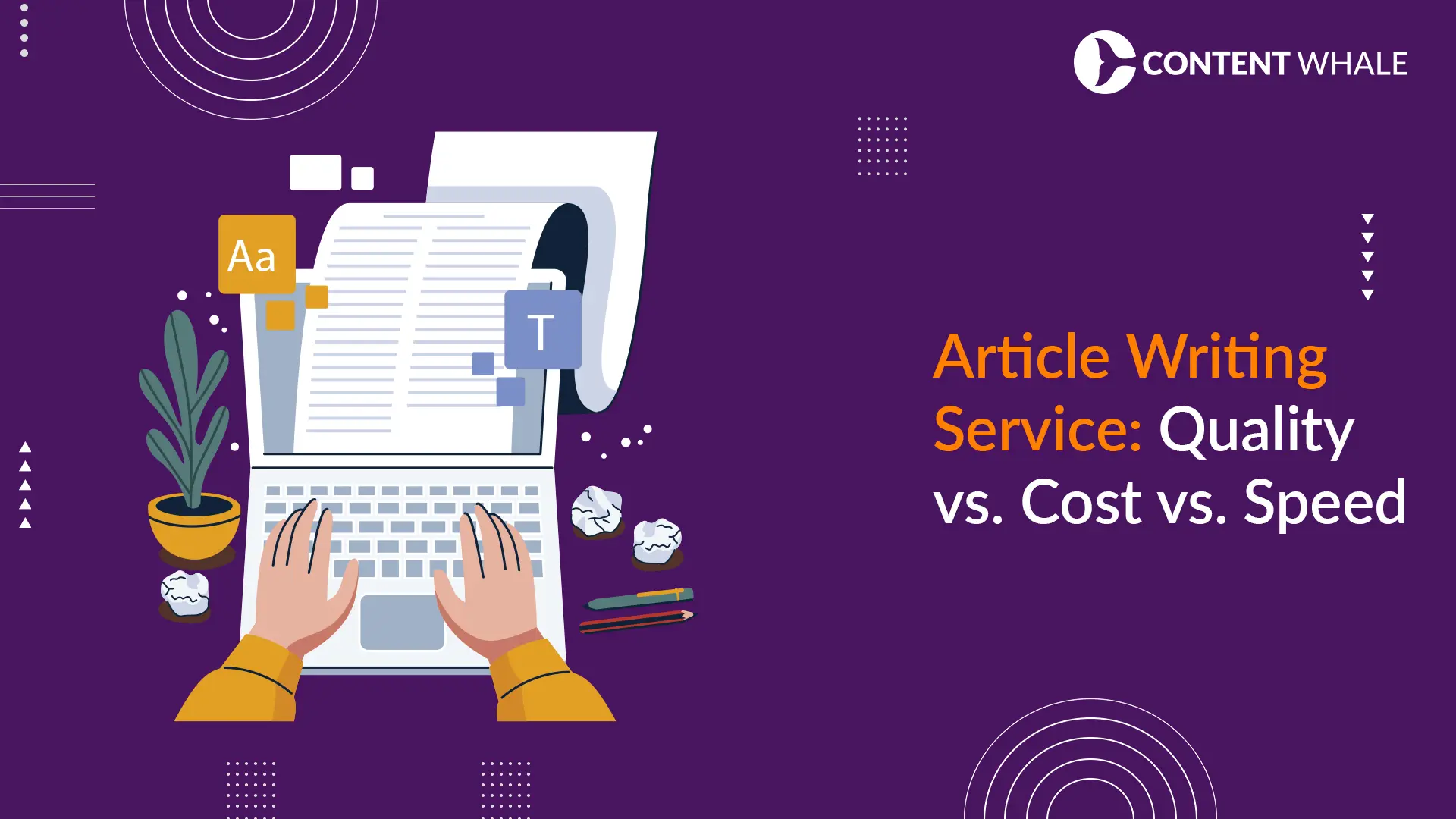Quick Summary
Enhance content engagement with visually appealing infographics. Boost information retention through data visualization. Strengthen your marketing strategy with shareable visual content.
Combining information and graphics, infographics have become a key tool for creating engaging content that stands out. These visually appealing elements present data and insights in a way that is easy to understand and more memorable than text alone. Visual content, such as infographics, is processed 60 times faster by the brain than text, making it an effective way to convey complex information quickly and clearly.
Using infographics as part of your content strategy can significantly enhance your online marketing efforts. They are highly shareable and can boost engagement by up to 650% compared to text-based content. This increased shareability extends your content’s reach, making it more likely to be seen and shared by a wider audience.
Effective infographic design involves not just the aesthetic aspect but also strategic placement of data points and storytelling. By integrating digital graphics that highlight key messages, you can improve retention and comprehension. Moreover, well-designed infographics can drive higher engagement on social media platforms, where users are more likely to share visually compelling content.
Incorporating infographics into your content marketing strategy can lead to better marketing outcomes. They provide numerous infographic benefits, such as enhancing engagement, improving retention, and increasing shareability. By using these content tips, you can create engaging content that captures attention and conveys your message more effectively.
1. Infographics Enhance Engagement
Visual appeal is a powerful tool for capturing audience attention, and infographics are exceptionally effective in this regard. By combining visual content with concise information, infographics can break down complex data into easily digestible pieces. This approach not only makes content more engaging but also encourages longer site visits and reduces bounce rates. Research shows that infographics can boost engagement by up to 650% compared to text-only content.
Transforming Information Presentation
- Visual storytelling: Infographics can transform the way information is presented, making it more attractive and interactive. Incorporating digital graphics and data visualization helps present information compellingly.
- Complex concepts simplified: Effective for explaining intricate concepts, showcasing statistics, or outlining processes. Infographics tell a story, making content more relatable and memorable.
Versatility in Content Marketing
- Cross-platform sharing: Infographics are versatile in content marketing. Share them across social media, blogs, and email campaigns to extend your content’s reach.
- Boosted visibility: Infographics are shared three times more than other types of content, enhancing your brand’s visibility and engagement metrics.
Effective Infographic Design
- Strategic layout: Thoughtful layout and strategic use of colors and typography draw attention to key information. Charts, graphs, and icons make data accessible at a glance.
- Balanced structure: Maintaining a clean and organized structure prevents overwhelming the audience, keeping viewers engaged and encouraging further exploration of the content.
Boosting Your Marketing Efforts
- Enhanced engagement: Integrating infographics into your content strategy can significantly improve the engagement and effectiveness of your marketing efforts.
- Valuable tool: Offering a unique blend of visual appeal and informational value, infographics are a valuable tool for any digital content plan. They help in educating, informing, or entertaining, making your content marketing more effective and efficient.
2. Infographics Improve Information Retention

Visual content, especially infographics, significantly enhances information retention. Studies have shown that people remember 65% of information when it is paired with relevant visual content compared to just 10% with text alone. This impressive statistic highlights the effectiveness of infographics in reinforcing key messages and data points, making them more memorable for your audience.
Cognitive Benefits
- Visual storytelling: Infographics combine text and visuals to create a narrative that is easy to follow and understand. This method of data visualization simplifies complex information, making it accessible and engaging.
- Enhanced comprehension: The human brain processes visuals 60,000 times faster than text. This rapid processing allows viewers to grasp and retain information quickly and efficiently, enhancing overall comprehension.
Practical Applications
- Educational tools: Infographics are highly effective in educational settings. They can break down complicated subjects into manageable chunks, aiding in better understanding and recall.
- Business presentations: Using infographics in presentations can help convey data-driven insights more compellingly. This is particularly useful for decision-makers who need to understand and remember key points quickly.
Interactive Elements
- Engaging content: Interactive infographics take engagement to the next level. By allowing users to interact with the content, such as through clickable elements or animations, you can significantly improve information retention. This interactive approach makes the learning experience more engaging and memorable.
- User participation: Adding elements like quizzes or clickable data points encourages users to engage actively with the content, which further enhances their ability to remember the information.
Design Considerations
- Color and typography: Effective infographic design involves strategic use of color and typography to highlight important information. Bright colors and bold fonts can draw attention to key facts, making them stand out.
- Simplicity and clarity: Keeping the design simple and uncluttered helps maintain focus on the essential information. Avoid overwhelming your audience with too much text or overly complex graphics.
By incorporating these design principles and leveraging the power of visual storytelling, infographics can transform your content strategy, making your messages more impactful and memorable.
3. Infographics Increase Shareability
Infographics are a highly effective tool for increasing the shareability of your content. They are visually appealing and easy to understand, making them ideal for sharing across various platforms. Here’s how infographics can boost your content’s reach:
Social Media Impact
- High Engagement: Infographics are shared 300% more often than text-only articles. They capture attention quickly and provide valuable information in a digestible format, which makes them perfect for social media. Posts with images, including infographics, receive significantly more engagement, with users being 30 times more likely to share visual content.
- Cross-Platform Sharing: Sharing infographics on platforms like Instagram, Facebook, LinkedIn, and Twitter can dramatically increase your content’s visibility. These platforms are optimized for visual content, which means your infographics can reach a wider audience and generate more interactions.
Branding and Recognition
- Enhanced Brand Awareness: Infographics can significantly enhance brand recognition. By incorporating your brand’s colors, logos, and fonts, you create a cohesive look that strengthens your brand identity. Consistent branding in your infographics helps create a lasting impression on your audience.
- Embedding and Sharing: Adding social share buttons and embed codes to your infographics encourages users to share them on their own websites and social media channels. This not only increases the reach of your content but also helps build backlinks to your site, which is beneficial for SEO.
Practical Tips for Shareability
- Create Visually Appealing Designs: Use vibrant colors, clean layouts, and engaging visuals to make your infographics stand out. The more attractive and easy-to-read your infographic is, the more likely it is to be shared.
- Simplify Information: Break down complex information into simple, easy-to-understand points. Use bullet points, icons, and concise text to convey your message clearly and effectively.
- Interactive Elements: Incorporating interactive elements like animations, clickable links, and embedded videos can further enhance engagement. These features make the content more dynamic and interesting, encouraging users to share it.
By leveraging these strategies, infographics can become a powerful part of your content marketing strategy, driving higher engagement and broader reach. They combine visual appeal with informative content, making them an ideal tool for increasing shareability and boosting your overall marketing efforts.
4. Infographics Support SEO Efforts

Infographics can play a significant role in enhancing your SEO strategy. They are not only visually appealing but also packed with information, making them highly effective for driving traffic and improving search engine rankings. Here’s how infographics can support your SEO efforts:
Boosting Organic Traffic
Infographics can attract a significant amount of organic traffic to your website. By presenting information in a visually compelling way, they encourage users to spend more time on your site. This increased engagement signals to search engines that your content is valuable, which can improve your rankings.
Improving Link Building
Creating high-quality infographics can naturally attract backlinks from other websites. When your infographic provides valuable information, bloggers, marketers, and influencers are more likely to share it and link back to your site. These backlinks are crucial for SEO as they signal to search engines that your site is a trusted and authoritative source. Infographics can be especially effective in generating these links without extensive outreach efforts.
Enhancing Social Shares
Infographics are highly shareable on social media platforms. They are three times more likely to be shared than other types of content. By incorporating social sharing buttons and embed codes into your infographics, you can make it easy for users to share your content, further increasing its reach and driving more traffic back to your site.
Optimizing for Search Engines
To maximize the SEO benefits of your infographics, it’s essential to optimize them properly:
- Keyword Research: Incorporate relevant keywords in your infographic’s title, description, and file name. This helps search engines understand the content of your infographic and rank it appropriately.
- Alt Text: Use descriptive alt text for your infographics. This not only helps with accessibility but also provides additional context to search engines.
- Supporting Text: Accompany your infographic with supporting text that includes relevant keywords. This text can help search engines index your content more effectively.
Increasing SERP Visibility
Infographics can also help you appear in Google Images search results. When optimized correctly, they provide another opportunity for users to discover your content. Including a compelling meta description and a clear call-to-action can further enhance the visibility and click-through rates of your infographics.
Building Brand Authority
High-quality infographics can establish your brand as an authority in your industry. By consistently providing valuable and visually appealing content, you can build trust with your audience and encourage them to view your brand as a go-to source for information.
Incorporating these strategies into your content marketing plan can significantly enhance your SEO efforts, driving more organic traffic, increasing your site’s authority, and improving overall engagement.
5. Infographics Boost Audience Understanding
Infographics are a powerful tool for enhancing audience understanding by transforming complex information into visually engaging and easily digestible content. Here’s how infographics can boost comprehension:
Simplifying Complex Data
- Data Visualization: Infographics use charts, graphs, and other visual elements to break down intricate data into simple, clear visuals. This method of data visualization helps the audience quickly grasp the key points without getting overwhelmed by too much information. This is particularly useful in fields like science, finance, and education, where data-heavy content needs to be communicated efficiently.
Enhancing Learning and Retention
- Visual Storytelling: By combining visual content with textual information, infographics create a narrative that guides the audience through the content logically. This approach not only makes the information more engaging but also improves retention. People are more likely to remember information presented visually compared to text alone.
- Engaging Content: Infographics can capture and hold the viewer’s attention better than plain text. The use of colors, images, and structured layouts makes the content more appealing and easier to follow, which is essential for maintaining engagement in today’s fast-paced digital environment.
Catering to Different Learning Styles
- Visual Learners: Many people are visual learners, meaning they understand and retain information better when it is presented visually. Infographics cater to this preference by providing information in a format that is naturally easier for visual learners to process.
- Interactive Elements: Modern infographics often include interactive features such as clickable elements, animations, and embedded videos. These interactive components can further enhance understanding by allowing users to explore the content at their own pace and focus on the areas that interest them the most.
Effective Design Principles
- Clear Hierarchy: Good infographic design follows clear visual hierarchy principles, using size, color, and positioning to highlight the most important information. This helps guide the viewer’s eye through the content in a logical order, making it easier to follow and understand.
- Minimalism: Keeping the design clean and uncluttered ensures that the focus remains on the key information. The use of ample white space, consistent color schemes, and readable fonts contributes to a more effective and enjoyable viewing experience.
Practical Applications
- Educational Tools: Infographics are highly effective in educational settings, helping students and educators convey and understand complex topics. They can simplify subjects such as history, science, and mathematics by presenting the information in an organized and visually appealing manner.
- Business Presentations: In business, infographics can be used to present data-driven insights and strategic plans clearly and concisely. This makes it easier for stakeholders to understand the information and make informed decisions.
By leveraging these design principles and focusing on the audience’s needs, infographics can significantly boost understanding and retention of information, making them an essential tool in any content marketing strategy.
Conclusion

Infographics are a powerful tool in content marketing, offering numerous benefits that can significantly enhance your strategy. They boost engagement by making complex information easily digestible and visually appealing. The ability of infographics to simplify data ensures that your audience retains more information, which is crucial for effective communication.
Their high shareability on social media platforms helps in expanding your content’s reach, making them an invaluable asset for increasing brand visibility. Additionally, infographics support SEO efforts by attracting backlinks and improving on-page metrics, further enhancing your website’s search engine ranking.
By incorporating well-designed infographics into your content strategy, you can create more engaging, memorable, and shareable content. This not only helps in educating and informing your audience more effectively but also strengthens your overall content marketing efforts, leading to better marketing outcomes.
FAQs
What Are the Key Elements of an Effective Infographic?
Effective infographics combine several key elements to communicate information clearly and engagingly. First, a strong visual hierarchy is essential, which means organizing elements by importance to guide the viewer’s eye. Color schemes should be used strategically to highlight key information without overwhelming the viewer. Typography is also crucial; choosing fonts that are easy to read ensures the content is accessible. Data visualization elements like charts, graphs, and icons make complex data more digestible. Finally, good use of white space prevents the design from feeling cluttered, making it easier for viewers to focus on the most important information.
How Can Infographics Enhance My Content Marketing Strategy?
Infographics can significantly boost your content marketing strategy by making complex information more accessible and engaging. They are highly shareable, which can increase your content’s reach on social media platforms. By presenting data in a visually appealing format, infographics can enhance audience understanding and retention, making your message more memorable. Additionally, well-designed infographics can drive more traffic to your site by attracting backlinks, which are crucial for SEO.
What Tools Can I Use to Create Infographics?
There are several tools available for creating high-quality infographics. Canva offers a user-friendly platform with numerous templates and customization options. Venngage is another popular tool that provides a wide range of templates and design elements. Piktochart is known for its data visualization capabilities, making it ideal for creating detailed and interactive infographics. Infogram is another great tool for data-driven infographics, offering various charts and interactive elements.
How Do Infographics Support SEO Efforts?
Infographics can enhance SEO by attracting backlinks, which are vital for improving search engine rankings. When other websites link to your infographic, it signals to search engines that your content is valuable and credible. Additionally, infographics can improve on-page metrics such as time spent on site and lower bounce rates, further boosting your SEO performance. To maximize these benefits, ensure your infographic is well-designed, informative, and includes relevant keywords in the title, description, and alt text.
Can Infographics Be Used in Social Media Marketing?
Yes, infographics are highly effective in social media marketing. They are visually appealing and can quickly capture the attention of users scrolling through their feeds. Infographics are also highly shareable, increasing the likelihood that your content will be seen by a broader audience. To optimize your infographics for social media, use a clear and engaging design, include your branding, and add social sharing buttons. This strategy can help boost engagement and drive more traffic to your site.





